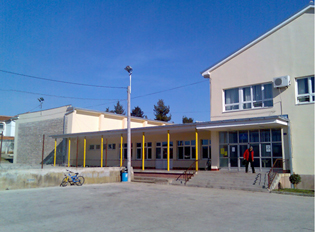- 2024
- June (1)
- 2021
- December (1)
- March (87)
- February (60)
- January (35)
- 2020
- December (109)
- November (111)
- October (109)
- September (114)
- August (22)
- July (129)
- June (116)
- May (93)
- April (106)
- March (114)
- February (53)
- January (31)
- 2019
- December (37)
- November (72)
- October (52)
- September (43)
- August (65)
- July (55)
- June (14)
- May (55)
- April (72)
- March (28)
- February (1)
- January (12)
- 2018
- December (49)
- November (45)
- October (44)
- September (31)
- August (61)
- July (46)
- June (48)
- May (33)
- April (61)
- March (53)
- February (45)
- January (50)
- 2017
- December (46)
- November (56)
- October (60)
- September (20)
- August (56)
- July (61)
- June (58)
- May (28)
- April (44)
- March (57)
- February (54)
- January (42)
- 2016
- December (55)
- November (70)
- October (73)
- September (24)
- August (50)
- July (47)
- June (61)
- May (19)
- April (48)
- March (47)
- February (33)
- January (45)
- 2015
- December (43)
- November (39)
- October (53)
- September (55)
- August (19)
- July (47)
- June (28)
- May (26)
- April (54)
- March (55)
- February (29)
- January (30)
- 2014
- December (26)
- November (48)
- October (44)
- September (30)
- August (28)
- July (30)
- June (23)
- May (53)
- April (30)
- March (25)
- February (31)
- January (16)
- 2013
- December (23)
- November (29)
- October (34)
- September (12)
- August (15)
- July (23)
- June (12)
- May (24)
- April (12)
- March (14)
- February (22)
- January (15)
- 2012
- December (16)
- November (30)
- October (28)
- September (4)
- August (14)
- July (15)
- June (3)
- May (5)
- April (7)
- March (14)
- February (8)
- January (9)
- 2011
- December (8)
- November (17)
- October (17)
- September (16)
- August (11)
- July (14)
- June (8)
- May (16)
- April (12)
- March (20)
- February (11)
- January (7)
- 2010
- December (3)
- November (8)
- October (18)
- September (19)
- August (12)
- July (16)
- June (21)
- May (15)
- April (12)
- March (15)
- February (22)
- January (11)
- 2009
- December (13)
- November (16)
- October (10)
- September (12)
- August (5)
- July (15)
- June (15)
- May (9)
- April (15)
- March (6)
- February (14)
- January (6)
- 2008
- December (9)
- November (5)
- October (2)
- September (2)
- August (1)
- July (1)
- June (1)
- April (4)
- February (1)
- January (3)
- 2007
- December (1)
- November (2)
- October (6)
PRIMARY AND SECONDARY SCHOOL EDUCATION IN SOUTH SERBIA

Almost all primary school pupils finish off school in 60 municipalities in Serbia, while in 55 municipalities less than 90 percent of students do so. The worst situation is in the municipalities of Medvedja Crna Trava and Merosina, where primary school is completed by less than 70 percent of students. In 15 municipalities, which include the municipality of Gadzin Han, the percentage ranges from 70 to 80 per cent, while in 37 municipalities, which include the municipality of Presevo, between 80 and 90 percent of students complete primary school education.
It was also established that, among others, students from the municipality of Lebane most often discontinue going to primary school, as well as that 65 percent of Roma children never complete it.
The percentage of children in Serbia who never complete their schooling is dramatically high in underdeveloped municipalities. One of the reasons for this is unorganized transportation to and from school, the cost of which should, by law, be covered by the municipality. There is no data for particularly vulnerable groups of students, such as children with disabilities or children from families living in poverty , but it is assumed that the rate of dropout in these groups is very high.
When it comes to secondary school, the data show that the coverage of secondary education in rural areas is lower than in urban areas, while in Roma settlements, only 30 percent of young people attend secondary school, while the percentage is even lower among Roma women. The dropout rate from secondary school, at the national level, ranges from five to 10 per cent, while it amounts to over five per cent in the municipality of Bujanovac.
Over the last two years, it was noticed that the best results were achieved by secondary school graduates from Pcinj district, or by those from Vranje and Trgoviste. These results should be analyzed to determine whether they are the result of poor control of the final exam.
The reasons for dropping out of secondary school include unorganized transportation from home to school, the scholarship and loan policy, which don’t benefit the most vulnerable pupils, teachers' attitudes and their lack of training in working with young people who are at risk of dropping out of school, and the lack of cooperation and coordination between schools, social centers and parents.
Source: Politika daily and Coordination Body